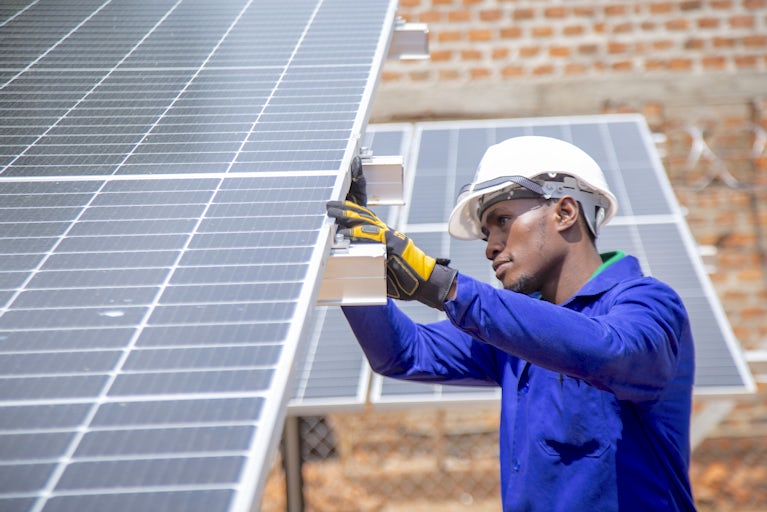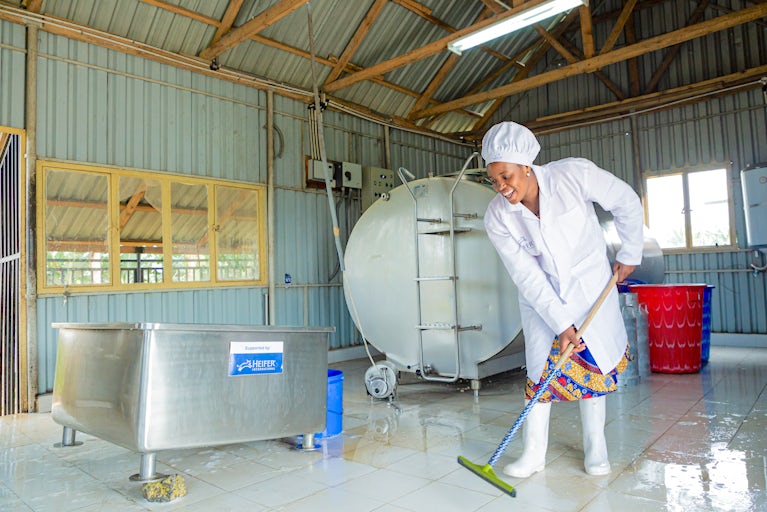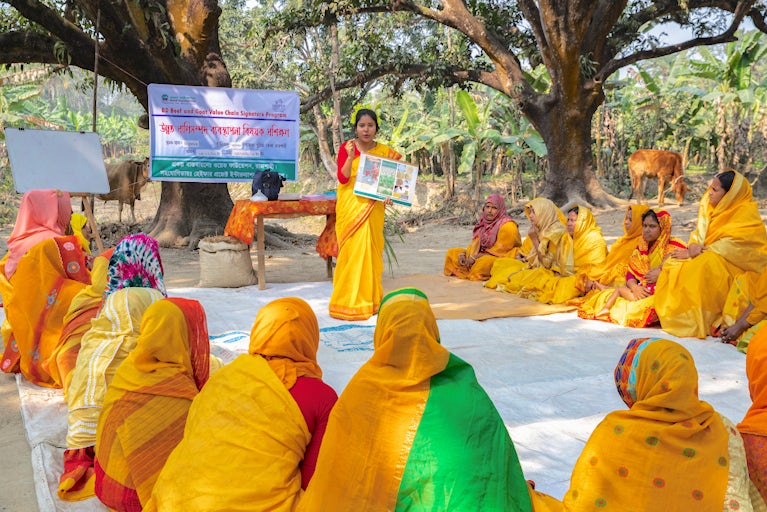
Harnessing Technology
Heifer invests in and deploys appropriate and accessible technologies with potential to transform smallholder farming systems.
Heifer International works with partners to support farmers in sustainably addressing hunger and poverty in their communities while caring for the Earth, with a focus on transforming food systems.
Our programs follow a sustainable locally-led development approach that responds directly to needs and priorities identified by the farming communities we serve. We invest in locally determined solutions.

Our community-led development model strengthens social capital within smallholder farming communities, building the foundation for program success. We facilitate creation of locally organized collectives, primarily women-led self-help groups, many of which evolve into agricultural cooperatives, producer organizations and business hubs. Working collectively, farmers are better equipped to leverage program support to access agricultural resources, capital and market connections to grow their businesses.
The model prioritizes supporting groups as they envision what their future looks like and collaborate toward shared goals. Central to this work is our 12 Cornerstones for Just and Sustainable Development training, a set of discussions and reflections that reinforce community solidarity. Through one of the Cornerstones known as Passing on the Gift®, participants also commit to pass on to others some assets or knowledge gained through their enterprises, creating a powerful multiplier of positive change.

To strengthen autonomous and effective action, we provide technical and business training to support farmers as they develop viable agribusinesses. This includes training on improved production quality, quantity and consistency; proper animal care; regenerative and climate-smart agriculture techniques; and financial literacy and business management.
We also partner with cooperatives and producer organizations to build capacity in business planning and management and to implement systems that ensure products meet standards for competing in local and global markets.

Heifer acts as a facilitator and convener to open new formal market avenues for farmers and transform food systems to drive resilience in farming communities. We work with smallholder communities on value chain analyses to determine what agricultural products are best suited to helping households earn a sustainable living income, in consideration of local resources and market demand.
Heifer then engages public and private sector partners to strengthen the networks required for farm-level investment and economic growth. This includes establishing connections between market actors, such as smallholder farmers, processors and buyers, as well as service providers like insurance companies and microlenders. Heifer also works closely with stakeholders to facilitate infrastructure development, such as affordable electricity, collection centers and processing facilities.

Heifer works with strategic partners at all levels to connect smallholder farmers to opportunity, strengthen market systems and achieve sustainable impact at scale. Our partners share our commitment to inclusive, environmentally sound solutions and include farmer organizations, women’s groups, businesses, governments, funders, researchers and more. Heifer also leverages generous financial support from thousands of individual donors to further our impact.
local, regional and global partners engaged in Heifer's programs
in assets passed on by participant farmers through Passing on the Gift since 2022
total sales by Heifer-supported agricultural enterprises in 2024
hours of training conducted in 2024
Our approach includes utilizing innovative strategies to help farmers and value chain partners accelerate agricultural productivity and participation in markets.

Heifer invests in and deploys appropriate and accessible technologies with potential to transform smallholder farming systems.

Heifer leverages third-party investments to extend program dollars and generate impact at scale.






Cart is empty
Success!
Please be patient while we send you to a confirmation page.
We are unable to process your request. Please try again, or view common solutions on our help page. You can also contact our Donor Services team at 855.9HUNGER (855.948.6437).
Covering the transaction fee helps offset processing and administrative fees that we incur through taking payments online. Covering the transaction fee for each payment helps offset processing and administrative fees that we incur through taking payments online. Covering the transaction fee for each payment helps offset processing and administrative fees that we incur through taking payments online.
Success!
Please be patient while we send you to a confirmation page.
We are unable to process your request. Please try again, or view common solutions on our help page. You can also contact our Donor Services team at 855.9HUNGER (855.948.6437).
When you donate a gift to someone, you'll have the option to create a free card after your donation is complete.

A FREE gift will be sent to supporters who choose to give a monthly gift.
Covering the transaction fee helps offset processing and administrative fees that we incur through taking payments online. Covering the transaction fee for each payment helps offset processing and administrative fees that we incur through taking payments online. Covering the transaction fee for each payment helps offset processing and administrative fees that we incur through taking payments online.

A FREE gift will be sent to supporters who choose to give a monthly gift.